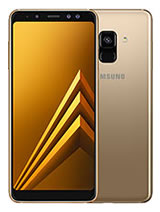Samsung Galaxy A8 Radiation Levels
[add_sar_ranking_update]
| Select a phone to compare SAR levels to other popular phones |
| Cell Phone Usage & Radiation Exposure | ||||||||||||
Samsung Galaxy A8 Safety Tip:How Much Will Turning Off Wi-Fi and Bluetooth Reduce Radiation?This SAR chart reveals how turning off Wi-Fi and Bluetooth on your Samsung Galaxy A8 can significantly reduce your exposure to radiation. Our SAR comparison chart shows that by simply turning off Wi-Fi and Bluetooth transmitters, you can lower the RF radiation exposure to your head by 65.8%, and you can lower exposure to the body by 35%, when considering these differences between cellular-only (Wi-Fi/Bluetooth OFF) and simultaneous use exposure (Wi-Fi/Bluetooth ON), a wise way to reduce excessive phone radiation is to tap off unnecessary transmitters when not in use! Additionally, when using your phone as a hotspot, turning off Bluetooth can reduce your exposure by up to % according to the FCC SAR report for device number A3LSMA530F. Samsung Galaxy A8 SAR Levels
|
Key Takeaways
- Children vs Adults: Children have higher SAR levels due to thinner skulls and developing tissues, making them more vulnerable to radiation.
- Wi-Fi Impact: Simultaneous use of cellular and Wi-Fi transmission increases SAR levels for all age groups.
- Precautionary Measures: Using radiation protection products like QuantaCase can help mitigate these risks, especially for younger users.
By understanding these differences, parents and guardians can make informed decisions to better protect their children from excessive microwave radiation exposure, emphasizing the need for safer smartphone usage practices and protective accessories like QuantaCase.

| Children vs Adults Radiation Exposure |
The Specific Absorption Rate (SAR) of a mobile device measures the amount of radio frequency energy absorbed by the body during device usage.
The SAR values for the galaxy-a8-sar-level-2018 (FCC ID A3LSMA530F) are as follows:
- 0.26 W/kg when held at the head with cellular transmission only
- 0.76 W/kg when worn on the body with cellular transmission only
- 0 W/kg when used as a Hotspot or Airplay
- 0.76 W/kg when held at the head with simultaneous cellular and Wi-Fi transmission
- 1.17 W/kg when worn on the body with simultaneous cellular and Wi-Fi transmission
- when used as a Hotspot simultaneously with other transmitters active.
Samsung Galaxy A8 - SAR Levels
FCC SAR Levels
- FCC Approval Date This is the date the phone SAR test was completed before the phone's release to the public as required by law. 11 January 2018
- FCC ID The FCC ID is the code used to register a device for FCC compliance A3LSMA530F
- FCC Report Link A direct link to the FCC's website for confirming SAR levels that are listed on our website - We did the homework for you!
- US SAR Ratings USA Legal Limit is 1.6 W/kg Minimum Separation Distance for Galaxy A8 is 15mm - USA Legal Limit is 1.6 W/kg - FCC SAR testing is measured in watts per kilogram (or W/kg) averaged over ONE gram of simulated biological tissue. It is a well known FACT SAR testing was not designed for protecting women or children from harmful radiation exposure, and SAR Test do not take into consideration health effects below thermal levels
- Head SAR Level SAR test when held against your head when only using cellular service. Wifi and other transmitter are NOT active 0.26 W/kg
- Body SAR Level SAR test when held against your body only using cellular service. Wifi and other transmitter are NOT active 0.76 W/kg
- Simultaneous Transmission The highest possible SAR recorded with ALL transmitters active, Cellular, WiFi, and Hotspot 1.54 W/kg - Hotspot Active
- Simultaneous Head The highest possible SAR test when held against your HEAD with cellular and WiFi transmitters active, 0.76 W/kg
- Simultaneous Body The highest possible SAR test when held against your BODY with cellular and WiFi transmitters active, 1.17 W/kg
- Hotspot SAR The highest possible SAR test when held against your BODY using the phone as a hotspot with cellular and WiFi transmitters active, 0.98 W/kg
EU SAR Level
- EU SAR Ratings European Legal Limit is 2.0 W/kg - EU SAR testing is measured in watts per kilogram (or W/kg) averaged over TEN grams of simulated biological tissue.
- Head SAR Level 0.32 W/kg
- Body SAR Level 1.27 W/kg
According to test reports filed with the Federal Communications Commission (FCC), the Samsung Galaxy A8 model number A3LSMA530F list the Specific Absorption Rate (SAR) values for the Samsung Galaxy A8 as 0.26 watts per kilogram (w/kg) at your head, and 0.76 w/kg when worn on your body. The Samsung Galaxy A8 hotspot SAR is 0.98 w/kg. The SAR for simultaneous transmission (cellular plus Wi-Fi) for the Samsung Galaxy A8 is 0.76 w/kg at your head, 1.17 w/kg when worn on the body, and 1.54 w/kg when used as a hotspot simultaneously with all other transmitters active.
All SAR levels reported to the FCC are averaged over one gram of body tissue corresponding to the maximum allowable level of 1.6 w/kg. The SAR levels will vary depending upon your specific cell phone carrier (e.g., AT&T, Sprint, T-Mobile, or Verizon).
The minimum separation distance for head and body-worn testing was 5 mm. That means the phone should never be closer than 5mm to your body when in use.








